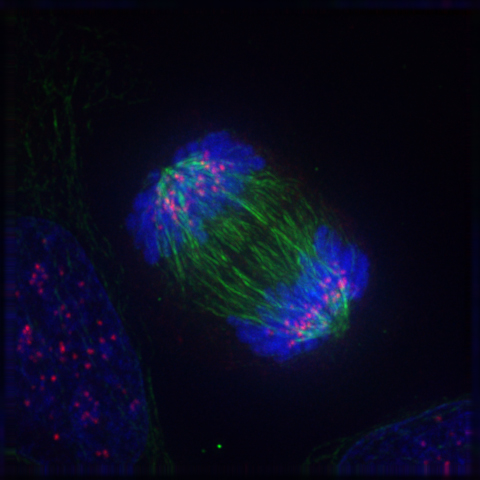Cytotaxonomy on:
[Wikipedia]
[Google]
[Amazon]
 Cytotaxonomy is the classification of organisms using comparative studies of chromosomes during mitosis.
Cytotaxonomy is the classification of organisms using comparative studies of chromosomes during mitosis.
 Cytotaxonomy is the classification of organisms using comparative studies of chromosomes during mitosis.
Cytotaxonomy is the classification of organisms using comparative studies of chromosomes during mitosis.
Description
Cytotaxonomy is a branch of taxonomy that uses the characteristics of cellular structures to classify organisms. In cytotaxonomy, the chromosomal configuration of an organism is the most widely used parameter to infer the relationship between two organisms. The inference of species relationships is based on the assumption that closely related species share similar characteristics in their chromosomal setup (referred to askaryotype
A karyotype is the general appearance of the complete set of metaphase chromosomes in the cells of a species or in an individual organism, mainly including their sizes, numbers, and shapes. Karyotyping is the process by which a karyotype is disce ...
). By analysing the similarities and differences in the chromosomes, karyotype evolution and species evolution can be reconstructed.
The number, structure, and behaviour of chromosomes is of great value in taxonomy
Taxonomy is the practice and science of categorization or classification.
A taxonomy (or taxonomical classification) is a scheme of classification, especially a hierarchical classification, in which things are organized into groups or types. ...
, with chromosome number
Ploidy () is the number of complete sets of chromosomes in a cell, and hence the number of possible alleles for autosomal and pseudoautosomal genes. Sets of chromosomes refer to the number of maternal and paternal chromosome copies, respectiv ...
being the most widely used and quoted character. Chromosome numbers are usually determined at the metaphase
Metaphase ( and ) is a stage of mitosis in the eukaryotic cell cycle in which chromosomes are at their second-most condensed and coiled stage (they are at their most condensed in anaphase). These chromosomes, carrying genetic information, align ...
stage during mitosis
In cell biology, mitosis () is a part of the cell cycle in which replicated chromosomes are separated into two new nuclei. Cell division by mitosis gives rise to genetically identical cells in which the total number of chromosomes is maint ...
. Usually, the diploid
Ploidy () is the number of complete sets of chromosomes in a cell, and hence the number of possible alleles for autosomal and pseudoautosomal genes. Sets of chromosomes refer to the number of maternal and paternal chromosome copies, respecti ...
chromosome number (2n) is referenced, unless dealing with a polyploid
Polyploidy is a condition in which the cells of an organism have more than one pair of (homologous) chromosomes. Most species whose cells have nuclei (eukaryotes) are diploid, meaning they have two sets of chromosomes, where each set contain ...
series in which case the base number or number of chromosomes in the genome of the original haploid is quoted. Another useful taxonomic character is the position of the centromere
The centromere links a pair of sister chromatids together during cell division. This constricted region of chromosome connects the sister chromatids, creating a short arm (p) and a long arm (q) on the chromatids. During mitosis, spindle fibers ...
. Meiotic
Meiosis (; , since it is a reductional division) is a special type of cell division of germ cells in sexually-reproducing organisms that produces the gametes, such as sperm or egg cells. It involves two rounds of division that ultimately res ...
behaviour may show the heterozygosity
Zygosity (the noun, zygote, is from the Greek "yoked," from "yoke") () is the degree to which both copies of a chromosome or gene have the same genetic sequence. In other words, it is the degree of similarity of the alleles in an organism.
Mo ...
of inversions. This may be constant for a taxon, offering further taxonomic evidence.
Often, cytological evidence is accompanied and strengthened by other analyses, including genomics
Genomics is an interdisciplinary field of biology focusing on the structure, function, evolution, mapping, and editing of genomes. A genome is an organism's complete set of DNA, including all of its genes as well as its hierarchical, three-dim ...
and DNA-based phylogenies
A phylogenetic tree (also phylogeny or evolutionary tree Felsenstein J. (2004). ''Inferring Phylogenies'' Sinauer Associates: Sunderland, MA.) is a branching diagram or a tree showing the evolutionary relationships among various biological spec ...
.
Cytology has contributed to tracking the evolutionary history of many organisms, especially primates and flowering plants. As example, karyotype comparisons have largely clarified the evolution of ''Arabidopsis thaliana
''Arabidopsis thaliana'', the thale cress, mouse-ear cress or arabidopsis, is a small flowering plant native to Eurasia and Africa. ''A. thaliana'' is considered a weed; it is found along the shoulders of roads and in disturbed land.
A winter ...
'' and of saffron crocus, though there are many more studies that deserve highlighting.
References
{{Reflist Genetics